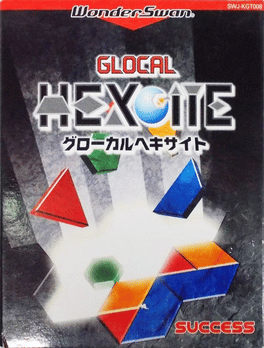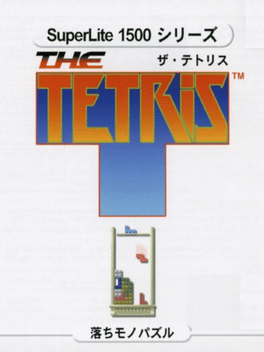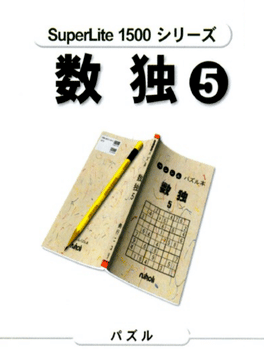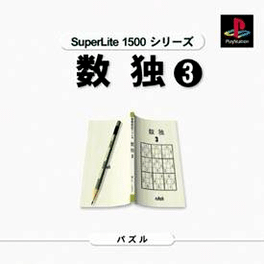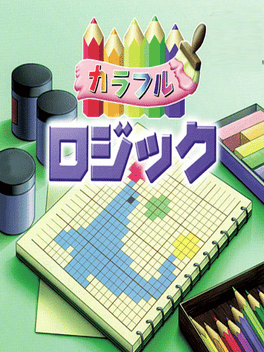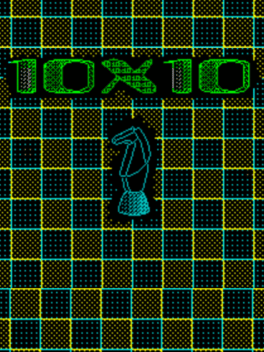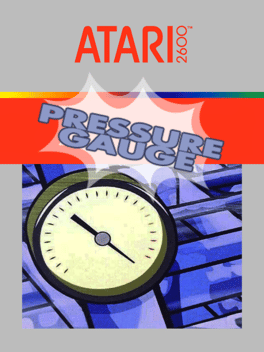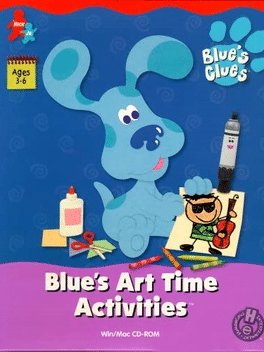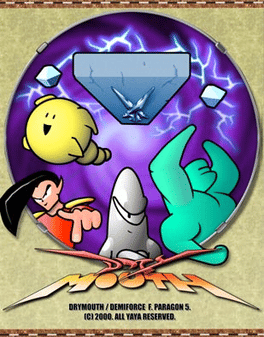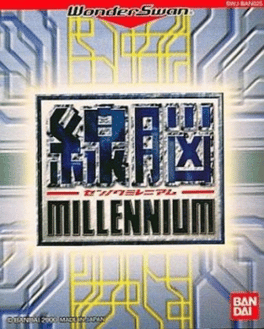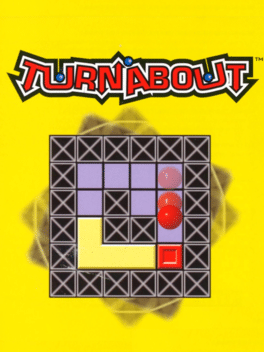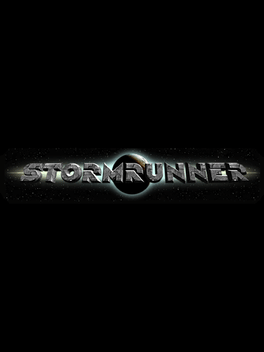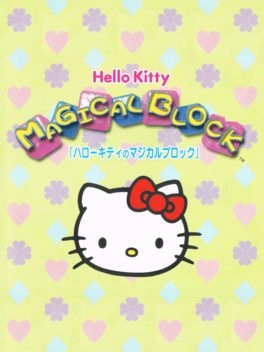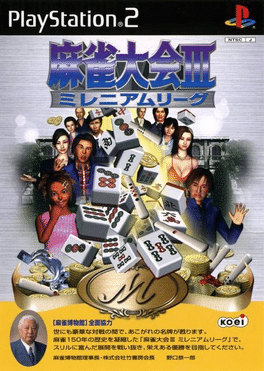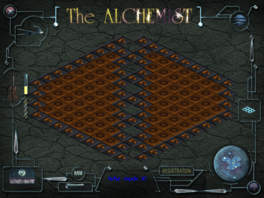New Ps3 Games - Page 263
-
Tonka Workshop
2000
Tonka Workshop
2000
In the Tonka Town Workshop, players bring their own tool workbench (the play set for their computer's keyboard) with them to get a lot of projects done, with Tonka Joe as their host. At the workshop, players would use their tools to create cool projects and as well as get jobs done. -
Glocal Hexcite
2000
Glocal Hexcite
2000
Glocal Hexcite is a Puzzle game, developed by Gu Inc and published by Success, which was released in Japan in 2000. -
SuperLite 1500 series: The Tetris
2000
The original version of the latest puzzle game classic! "Tetris" is proud to number more than 50 million sales worldwide, is a popular puzzle game. This work "The Tetris" So scores continue to compete off the block "1PLAYER" mode, you can play with man against man "2PLAYER" We offer a mode. "1PLAYER" mode is a type of game scores compete. Eliminate one level up every 10 columns, change the background image is available 140 sheets at a time. The faster the blocks fall in the level rises will slow once every five levels, maintains the integrity of the tension and sense of relief on continuing the game. The difficulty levels from 0 to 30 can be selected at intervals of 5 levels. When you reach a level higher than 35 games go, the more you can choose from one level in the next play. "2PLAYER" mode is a type of game play against each other to do two users. Depending on the column player disappeared, garbage is fed to the other blocks. Saseta side wins piled up above the opponent's block. -
Suzuki Bakuhatsu
2000
-
SuperLite 1500 Series: Oekaki Puzzle 3
2000
Complete collection of puzzle games will fill the picture based on the mass number of vertical and horizontal scratching puzzles first whenever visiting ?[third. Offers a wide range from beginners to advanced, are newly written and contained 200 questions for fulfillment. Course descriptions are also equipped with safety rules even beginners course. The configuration also introduces new features, making it more comfortable to operate. -
SuperLite 1500 Series: Sudoku 5
2000
Sudoku is a logic-based, combinatorial number-placement puzzle. The objective is to fill a 9×9 grid with digits so that each column, each row, and each of the nine 3×3 sub-grids that compose the grid (also called "boxes", "blocks", "regions", or "sub-squares") contains all of the digits from 1 to 9. The puzzle setter provides a partially completed grid, which typically has a unique solution. Completed puzzles are always a type of Latin square with an additional constraint on the contents of individual regions. For example, the same single integer may not appear twice in the same 9x9 playing board row or column or in any of the nine 3x3 subregions of the 9x9 playing board. The puzzle was popularized in 1986 by the Japanese puzzle company Nikoli, under the name Sudoku, meaning single number. It became an international hit in 2005. SuperLite 1500 Series - Suudoku 5 is the fifth sudoku game in the series for the Playstation One console that features over 200 different sudoku challenges. The game features 3 differe -
Colorful Logic
2000
Colorful Logic
2000
Logic puzzles to complete to fill the grid in a number tips. Logic puzzle Along with crossword puzzles, and it is supported by the deep-rooted fan. Debuts at an affordable price where it to meet the demands of everyone referred to as "! Want to enjoy logic puzzles more easily"! Issue number of 250 questions in total. Color problem is equipped in addition to the normal problem 30 × 30 squares (a total of six) from 5 × 5 trout. It has become a work from beginner to advanced will enjoy towards various. It is one recommended for those looking for fun easily towards the logic puzzle love. -
Picross NP Vol. 8
2000
Picross NP Vol. 8
2000
The eighth and final of a series of eight Picross puzzle games distributed over the Nintendo Power cart-writing service. This part includes puzzles featuring characters from Donkey Kong Country. -
10 x 10
2000
10 x 10
2000
The 10x10 game is a puzzle game, which was presented to the world by Cyber, Qazix, Dexter and rVx, was published by the Cobra Software team in 2000 in Ukraine. -
Pressure Gauge
2000
Pressure Gauge
2000
Pressure Gauge is a game that was written back in 2000 as a college exercise by John K. Harvey. It's not much to look at graphically, but this game is a "twitch" game that just may have you reaching for the reset button for "just one more round". The game was inspired by a mini-game in the Playstation title "Brave Fencer Musashi". Gameplay is simple. The initial screen says "Pressure Gauge"; from here, you can hit select to see the first homebrew attempt at a scrolling text demo (which would later be reformulated and released as StickyNotes), or you can hit the reset button to start the game. A little song will play, and you're on your way! The interface is as simple as can be-- it only uses the button. Push the button precisely when the leftmost "filling gauge" is lined up with the "range" on the left of it. Get within range, and you'll be rewarded-- slightly. The second gauge will fill up, just a little bit. You need to have a certain amount of successes in order to fill the second gauge all the way to the top, t -
Blue's Art Time Activities
2000
Kids get to create art for "The Really Big Art Show." In 5 learning activities, explore abstract and traditional art forms, color, texture, and composition. Strengthen prediction, estimation, and problem-solving skills. There is so much to do and learn with Blue! -
Drymouth
2000
Drymouth
2000
Drymouth is a homebrew puzzle game for the game boy color. What you do is follow the numbers above and to the left of the field to see which blocks you should punch out. When all the blocks are correctly punched out, the pattern will form a picture. -
Sennou Millennium
2000
Sennou Millennium
2000
Sennou Millennium is a Puzzle game, developed by Kouyousha and published by Bandai, which was released in Japan in 2000. -
Turnabout
2000
Turnabout
2000
While the old adage that "turnabout is fair play" applies in many situations, Natsume's Turnabout is all about diabolical puzzles where players rotate the entire puzzle while the pieces move within its borders, sliding and rolling into mind-numbing configurations and patterns. The 100 puzzles provided are divided into two groups of 50: Begin Mode and Main Mode. The first 50 puzzles must be solved in order to open up the remaining 50, but the puzzles are numbered in five rows of ten each -- solving seven rounds in a row will open up the next row of ten, thus the puzzles needn't be solved sequentially. Puzzle pieces in Turnabout come in three types: colored balls, colored blocks, and sliding blocks. By rotating the puzzle board, balls and sliding blocks adhere to the forces of gravity and fall down into open slots. Manipulating the puzzle correctly takes skill and usually no more than ten to fifteen "steps," even at advanced levels. Learning to solve puzzles backward by picturing the flow of the pieces mentally can -
Stormrunner
2000
Stormrunner
2000
A spaceship has been marooned on an unknown planet. The player must create and program robots based on the Lego Mindstorms RCX kit in order to explore the planet and find a way off. -
Picross NP Vol. 7
2000
Picross NP Vol. 7
2000
The seventh of a series of eight Picross puzzle games distributed over the Nintendo Power cart-writing service. This part includes puzzles featuring characters from Wario Land II. -
Hello Kitty Magical Block
2000
Hello Kitty Magical Block is a Japanese exclusive puzzle game based on the Hello Kitty series. -
Mahjong Taikai III
2000
-
The Alchemist
2000

